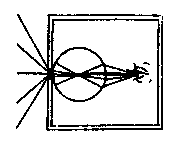 CHArt
CHArt  CHArt
CHArt Computers and the History of Art - 1999 Conference Paper Abstract
The friendship between Whistler and E. W. Godwin was a central influence on the Aesthetic Movement in the 1870s. They shared a keen interest in Chinese and Japanese art and collaborated on a number of works, including furniture, interior design and, most notably, the first Aesthetic house in London. This was Whistler's studio house, the White House, in Tite Street, Chelsea, built in 1877-78, but only briefly enjoyed by Whistler, who was forced by bankruptcy to sell it in 1879. Its subsequent owner, an art critic, carried out alterations which were deplored by the original architect and client alike. Whistler and Godwin remained on good terms, and even Godwin's death in 1886 did not end their association, as Whistler married his widow.
The White House was demolished in the 1960s. Plans and drawings that survive in London and Glasgow have allowed CAD drawings to be made of the original design, including the recreation of the east elevation, for which no drawings survive. Research has included work on the design detail of some public areas, as well as a study of the process of design and building.
This work will be presented in the context of the electronic edition of the complete Whistler correspondence, which has been supported by the British Academy since 1991. The paper will illustrate the methodology of the Glasgow edition, with reference to metadata currently covering 12,500 letters and documents, 3,000 works of art, 3,000 individuals, 250 exhibitions, a bibliography of 2,000 works, and 4,000 entries on the chronology of Whistler's lifetime. It will also demonstrate the SGML mark-up of letters and supporting information, including scans of works of art and other images, and will present an overall view of one of the largest electronic archives on a nineteenth-century artist.